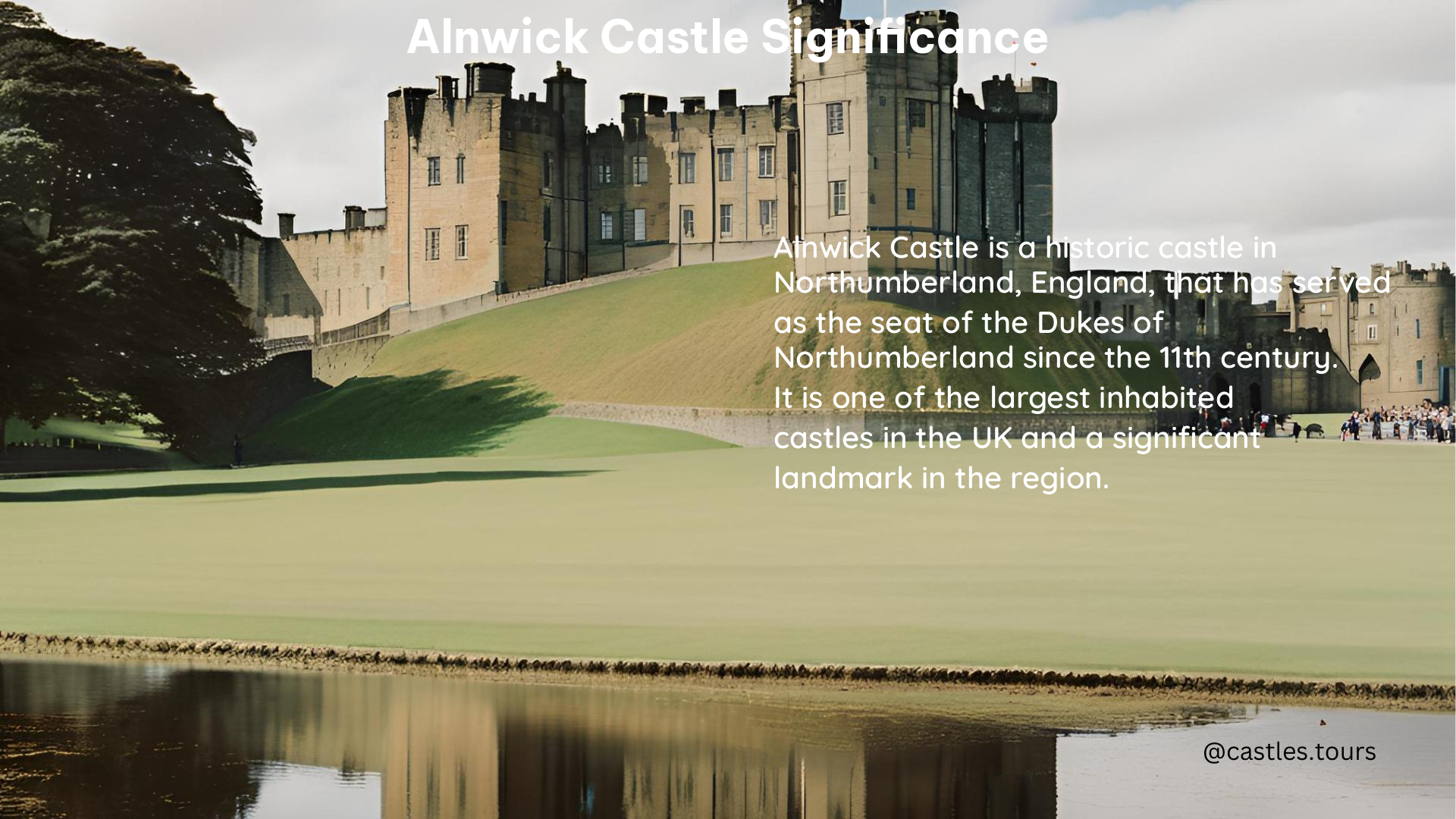Alnwick Castle, a magnificent fortress nestled in the heart of Northumberland, England, holds a profound significance that has captivated visitors for centuries. As one of the oldest and most well-preserved castles in the country, Alnwick Castle’s rich history, architectural evolution, and cultural impact make it a must-visit destination for castle enthusiasts and history buffs alike.
The Norman Conquest and Border Control
Constructed in 1096, Alnwick Castle was one of the earliest castles in England built without a square keep. Its strategic location along the border with Scotland made it a crucial stronghold for the new Norman barons, who sought to control and protect this vital region. The castle’s unique design and position symbolized the power and status of the ruling class, solidifying their dominance over the surrounding lands.
The Enduring Legacy of the Percy Family

For over 700 years, Alnwick Castle has been the ancestral home of the Percy family, a noble lineage that has played a significant role in English history. From the legendary Harry Hotspur to the influential Henry Percy and Thomas Percy, the castle has witnessed the triumphs and tribulations of this illustrious family. Their stories, intertwined with the castle’s walls, have captivated generations of visitors, offering a glimpse into the intricate tapestry of England’s past.
Architectural Evolution: From Fortress to Palace and Back
Alnwick Castle’s appearance has undergone numerous transformations over the centuries, reflecting the changing architectural styles and the aspirations of its owners. From the original medieval fortress to the Gothic-style palace and back to a more authentic medieval border fortress, the castle’s evolution has been shaped by the contributions of renowned architects, including Daniel Garrett, James Paine, Robert Adam, and Anthony Salvin. These renovations and restorations have preserved the castle’s historical integrity while adapting it to the needs and tastes of each era.
Alnwick Castle in Conflict and Culture
The castle’s strategic location has made it a witness to numerous historical events, including the Wars of the Roses, the English Civil War, and the Jacobite Risings. It has also been the target of attacks, such as the assault by King William the Lion of Scotland in 1173 and 1174. Beyond its military significance, Alnwick Castle has also gained cultural prominence, serving as a filming location for popular movies and TV shows, including the “Harry Potter” series, “Transformers: The Last Knight,” and “Downton Abbey.”
Preservation and Public Access
Today, Alnwick Castle remains a vibrant and well-preserved historical site. The castle is still inhabited by the 12th Duke of Northumberland and his family, who occupy a portion of the property. The castle is open to the public during the summer months, allowing visitors to explore its rich history and admire its architectural grandeur. Ongoing efforts to preserve and enhance the castle’s facilities ensure that it continues to captivate and educate generations to come.
Alnwick Castle’s Significance and Recognition
Alnwick Castle’s significance is further underscored by its recognition as a Grade I listed building, a designation that acknowledges its exceptional historical and architectural importance. Additionally, the castle is the tenth-most-visited stately home in England, according to the Historic Houses Association, reflecting its enduring appeal and cultural value.
Landscape and Gardens: A Harmonious Blend
The grounds surrounding Alnwick Castle are equally impressive, having been landscaped by the renowned English landscape architect, Lancelot “Capability” Brown. These beautifully manicured gardens and parklands complement the castle’s imposing presence, creating a harmonious blend of natural and man-made wonders.
Educational and Cultural Contributions
Beyond its role as a historic site, Alnwick Castle serves as a significant educational resource, housing various exhibitions, museums, and archives. The Regimental Museum of the Royal Northumberland Fusiliers and the Northumberland Collection and Archive are just two examples of the castle’s commitment to preserving and sharing the region’s rich cultural heritage.
In conclusion, Alnwick Castle’s significance extends far beyond its impressive physical presence. As a testament to the resilience and adaptability of the human spirit, the castle’s history, architecture, and cultural impact have captivated visitors for centuries, making it a true gem in the crown of England’s historical landmarks.
References:
- https://en.wikipedia.org/wiki/Alnwick_Castle
- https://www.alnwickcastle.com/explore/the-history/the-history-of-the-castle
- https://www.alnwickcastle.com/explore/the-history/facts-figures
- https://www.alnwickcastle.com/explore/the-history/the-percy-family
- https://www.britannica.com/place/Alnwick-Castle-England
